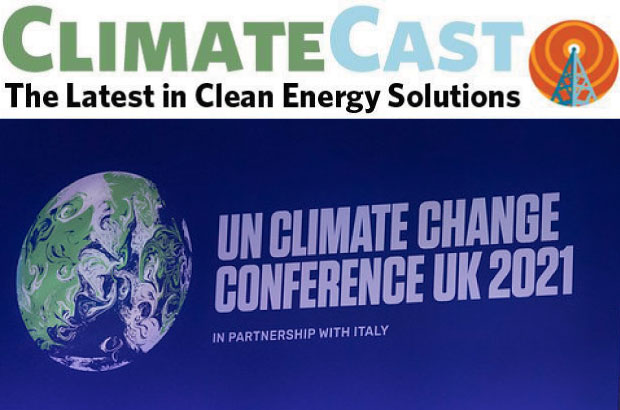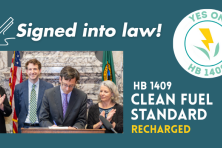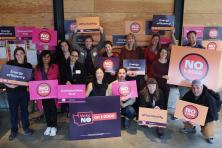Who’s who, where’s where, and what’s what (and what’s not) from COP26
Last week’s headlines were full of the who, what (and for some where) as world leaders and climate activists convened in Glasgow for the UN Conference of Parties (COP). While US climate envoy John Kerry labeled the international convening as “our last best hope,” it’s important to define the week’s successes outside the binary of win or lose or who is and isn’t in attendance. The meetings and speeches are reverberating around the world with over 100,000 taking to the streets on every continent Saturday to protest for climate action and climate justice, with over 25,000 in Glasgow alone. So how much progress is really being made? Here’s a snapshot so far as the meeting heads into the second week:
- Youth activists are calling the week a “youth-washing” project that remains dominated by rich countries in the Global North and notable for its lack of racial diversity.
- Global banking leaders pledged a lot of money ($130 trillion) in investments, despite still being heavily invested in fossil fuels.
- A major win for deforestation with more than 100 leaders, representing more than 85% of the world's forests, agreed to end deforestation by 2030.
- A global pledge to reduce methane emissions by 30% by 2030 signed by more than 100 countries. Even though methane is not nearly as understood or known, it’s playing an enormous role in the climate crisis.
- Coal use and funding remains stubbornly embedded in global economics and energy consumption with many of the world’s biggest consumers absent last week’s phase-out pact.
After the highly visible first week, the conference now moves to a more critical, behind doors phase of the negotiations. The context for COP26 is still clear—emissions are still rising and we need to act—and the International Energy Agency (IEA) said it’s critical that countries follow through on commitments made last week.
It’s not everything, but it’s definitely something
After many months, much hand wringing and wrangling, and exhaustive negotiations, House Democrats passed the $1 trillion infrastructure package late Friday night. With the larger social safety net and climate change bill on hold, this federal infrastructure package focuses largely on “traditional infrastructure” but represents historic and significant investments in climate resilience and investment in frontline communities. It includes billions in funding to support clean energy technologies and fight climate change through investments ranging from electric vehicle infrastructure to public transit. Hailed by some as a game-changing investment, many climate and environmental advocates acknowledge it as a “down payment” that omits billions of dollars of additional money and aggressive action to sharply reduce carbon dioxide emissions. Notably the climate spending was much higher in the original $2 trillion version before the long political stalemate—funding for electric vehicles was slashed 90 percent, funding for clean energy tax credits cut out entirely, and more. Climate Solutions’ Gregg Small discusses how two truths about congressional climate action are possible on the CS blog.
Election bright spots: Renewables, buildings, and environmental justice
Voters went to the polls last week and while the majority of the headlines covered a drubbing of congressional and gubernatorial Democrats, a number of climate initiatives and other progressive issues were on ballots across the country with some bright spots of progress. New York’s Proposal 2, adding environmental justice to the state’s constitution, passed with over 60% of the vote. Mainers voted to reject high stakes energy policy, a $1 billion project to bring Canadian hydropower to the state. The project was controversial and the most expensive in state history—utilities poured more than $90 million into the battle over the referendum. And while Virginia voters elected Republican Glenn Youngkin as governor, much of the state’s landmark 2020 Virginia Clean Economy Act (a 100% clean electricity law) is already underway as the state’s two primary utilities have already submitted plans to state regulators to comply with the deadlines. Notably all-electric buildings kept momentum with Ithaca, NY voting to decarbonize and electrify all buildings and voters will decide on a $20 million bond in Burlington, Vermont to help meet its net-zero goals.
One Thing You Can Do
At ClimateCast we look forward to positive clean energy and climate headlines that are becoming more and more common, but every once in a while something bigger catches our eye. Our OTYCD action this week might not have direct climate impact, but it may bring a smile to your face. Back after 40 years and recording in secret, ABBA returns with their album Voyage. Give it a listen to brighten up these darker, colder fall days; or listen to whatever music brings you joy!




